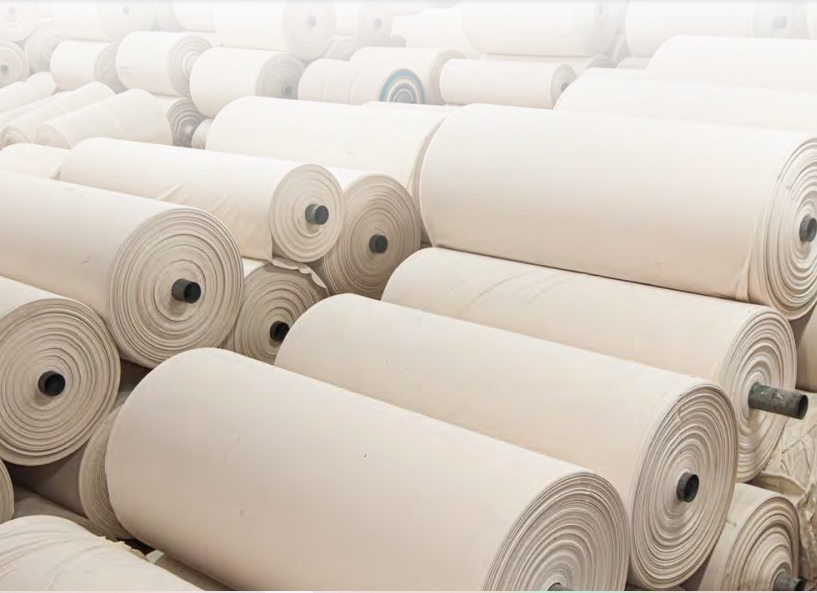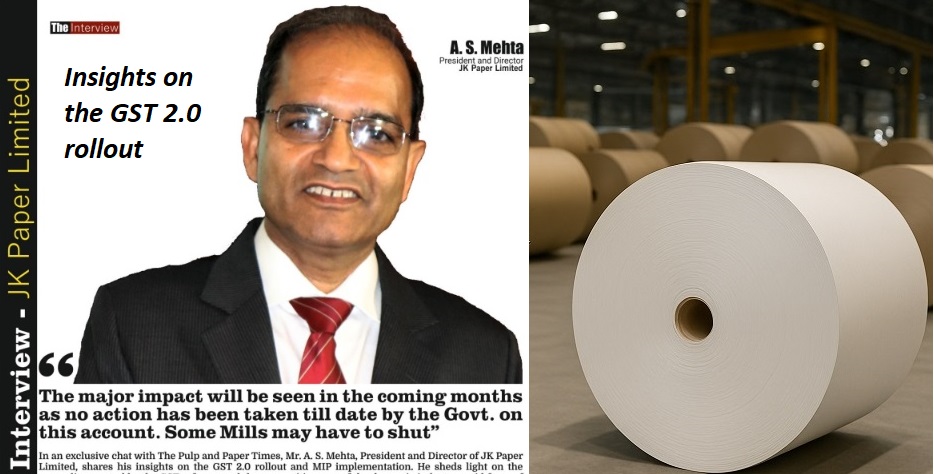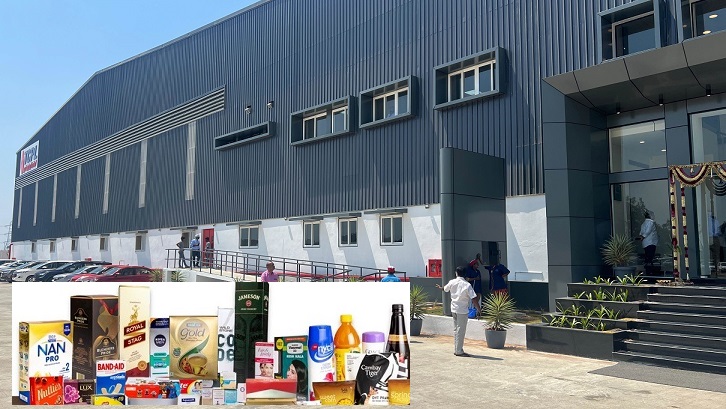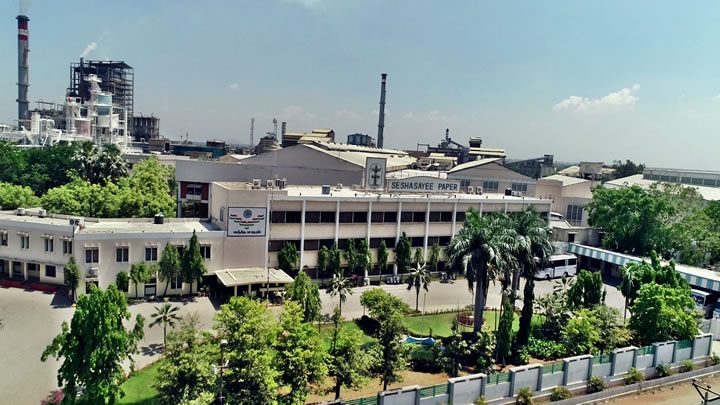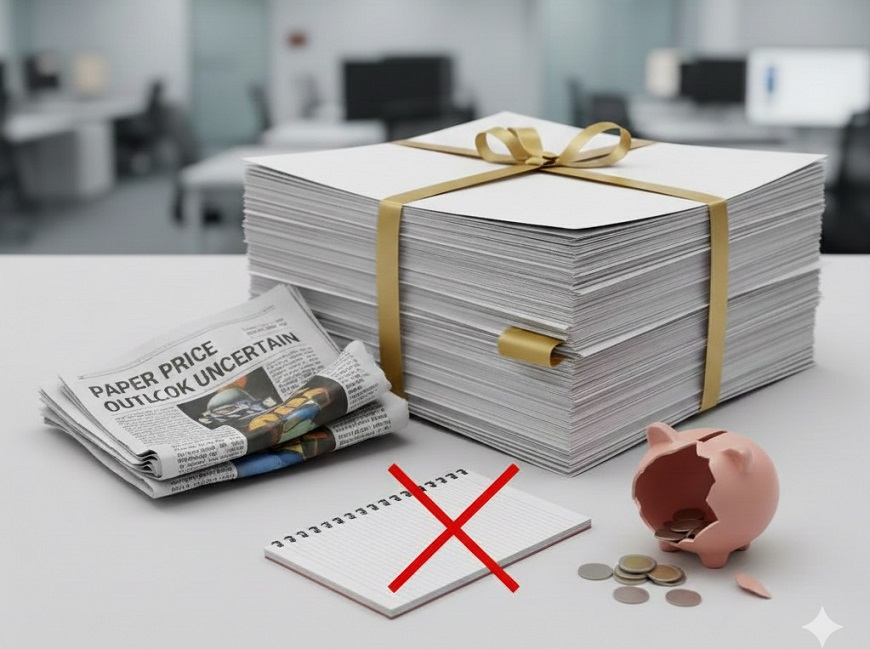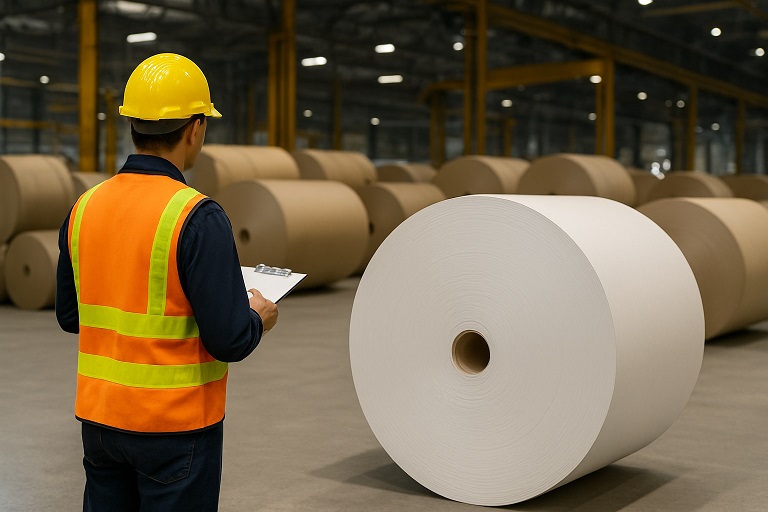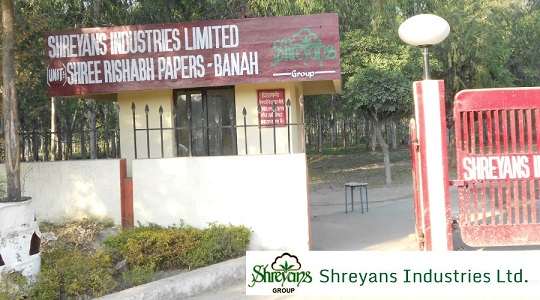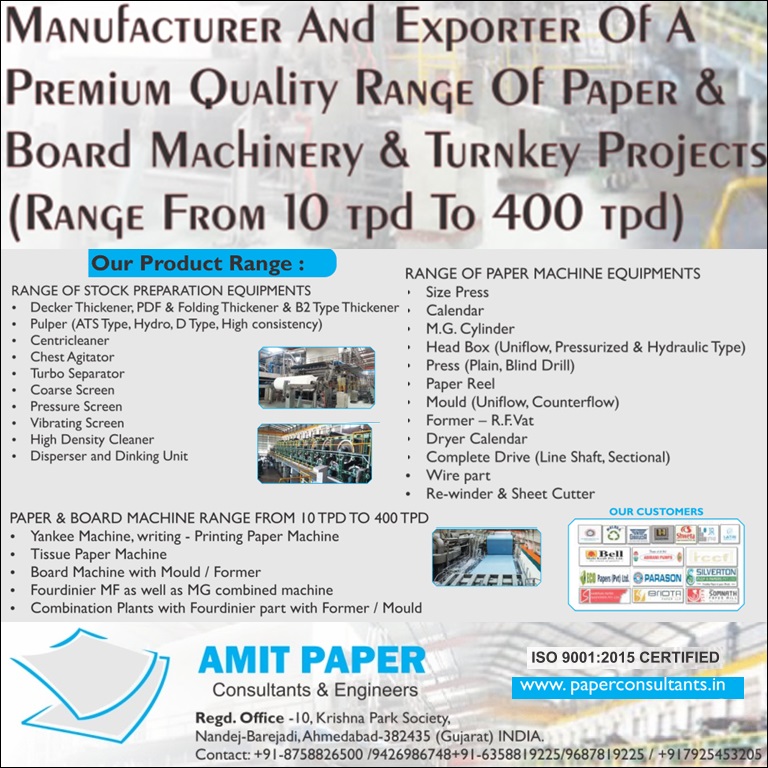“The American waste ecosystem recycles far more waste paper than India, exposing a major gap in our recycling efficiency,” says Mr. Dwipayan Patnaik of Stark Ridge Paper

“The American waste ecosystem recycles far more waste paper than India, exposing a major gap in our recycling efficiency,” says Mr. Dwipayan Patnaik of Stark Ridge Paper.
-“The only reason they (Customer) are willing to buy from Southeast Asia or China is not because of any personal affinity, but purely because they fulfill the customer’s requirements”
-“The arbitrary pricing mentioned by corrugators is not so arbitrary but fundamentally a function of the lack of control over raw material prices”
-“Stark Ridge has also managed to adopt technology to reduce our carbon footprint by reducing fossil fuel consumption by up to 15-20%”
In an exclusive interview with The Pulp and Paper Times, Mr. Dwipayan Patnaik, Managing Director of Stark Ridge Paper Pvt. Ltd., offers deep insights into the challenges and opportunities shaping the paper industry. He discusses the current state of Kraft paper, explores strategies to enhance waste paper recycling in light of the EU export ban, and shares his perspective on the evolving industry landscape. Read the full interview below:
The Pulp and Paper Times
Q: Please provide a brief introduction to Stark Ridge Paper (SRP).
A: Stark Ridge Paper is a one-of-its-kind FSC and SGS-certified odour-free kraft paper manufacturing company, situated in eastern India. It is one of the few companies in the country to be fully ESG-compliant, and has been able to demonstrate an absolute ZLD manufacturing process, while maintaining parameters that are suitable to provide packaging solutions for export-oriented food and pharma industries.
It was a company that was taken over by our (Patnaik) group in 2019 and started production in early 2020. Despite being a new entrant to the industry, and the challenges surrounding Covid-19 and sluggish markets, the team has been able to transform the company from a small local player to a globally competitive company, equivalent to the ones seen in China or South East Asia.
Thus, today, Stark Ridge Paper is not only known for its state-of-the-art products and manufacturing process but also its focus on bringing quality and transparency to the industry. It is equipped with some of the most robust systems and processes that harbour and train some of the youngest minds of our industry.
Q: What are the biggest challenges you're currently facing as a Kraft paper mill owner? (e.g., rising raw material costs, energy costs, freight rates, import competition, labor shortages, environmental regulations)
The one-line answer to your question is “unstable raw material prices”, but it is also important to note that many of the challenges that you have mentioned above are fairly inherent to this industry. And although these challenges may seem new to the Indian markets, they have presented themselves, in equivalent or different forms, in more mature markets like the US, Europe, Japan or China. Thus, it is essential for industry participants and government agencies alike to examine these cases and learn from the approaches taken in these countries.
We at Stark Ridge Paper have been fortunate to incorporate a few of these into our system and as a result, have tried to remain ahead of the curve. However, we continue to humbly study these markets in greater detail to understand how we can learn from them and adopt their solutions to address our problems.
Q: Excess capacity and export decline have significantly impacted the Kraft and Duplex segments across India. Do you believe these two factors are the primary reasons behind the sluggish market?
“Supply and Demand mismatch” are again an inherent part of market cycles. I’m sure when exports were booming, additional capacities would have been justified as the need of the hour to stabilize prices. Thus, I think it would be unfair to point fingers and blame the sluggish markets. Markets are independent in nature and will continue to move up and down over time.
Yes, the market’s sentiments are weak right now. However, our approach at Stark Ridge Paper has been to accept the current situation for what it is - i.e., beyond anybody’s control - and continue working towards our long-term goals. We continue to remain bullish on the long-term prospects of this industry. We think India and the packaging industry (and hence the paper markets in general) are on a good footing, so we have a strong conviction in the long-term potential of this industry. We will remain patient and continue doing the work that needs to be done to improve our potential for growth in this industry.
Q: New capacities in Southeast Asia, China, and the GCC have substantially reduced exports from India. Do you believe this export decline will be permanent? If not, why?
Not necessarily, but Indian mills will need to upgrade and improve.
Let's understand it from a customer’s perspective. Customers will always demand better quality at a better price, delivered to them at the shortest time. The only reason they are willing to buy from Southeast Asia or China is not because of any personal affinity, but purely because they fulfill the customer’s requirements. In an open and capitalized market that we live in, every company has an equal opportunity to attempt to cater to these demands and gain market share.
We at Stark Ridge Paper have been constantly focusing on understanding these ever-evolving customer demands, and the results make us confident that companies that do this will not only sustain their export volumes, but might potentially improve upon them.
Q: Please elaborate on any expansion or upgradation plans for Stark Ridge Paper, including the expected startup date and the paper grade you will manufacture.
At Stark Ridge Paper, our focus has been to continue studying the growing customers’ demands and see how we can position our company to best fulfil those demands. We are fortunate to have a phenomenal ecosystem of mentors and colleagues who are constantly pitching us ideas. We go through them together and come up with a hierarchy in which we must execute them. Thus, fortunately, we are always working on something.
These new projects are aligned with our focus on improved efficiency, scale, quality, and most importantly sustainability and transparency. Each of these projects has its own time line, so it will be difficult to provide a single date. Our attempt will be to make sure that each of them are incorporated into our production process as soon as they are ready.
All of this aside, I can certainly say with a lot of conviction that the more we work in this industry, the more we understand the limitless potential and opportunities that exist in this industry.
Q: Corrugated box associations sometimes blame paper mills for arbitrary price hikes. Does Stark Ridge Paper support this claim, especially amid overcapacity and rising input costs?
When has blaming anything or anyone ever helped the situation? This doesn’t mean that the corrugators do not have a valid argument either. The point we are trying to make is that it is important to understand that this is again the nature of free markets. Just like people trading on the Bombay Stock Exchange have no control over what the BSE 500 stock index is going to do, no singular entity in our industry has the capacity to control prices.
The corrugators have no control over paper prices, while the paper mills, on the other hand, have no control over their raw materials. Hence, the arbitrary pricing mentioned by corrugators is not so arbitrary but fundamentally a function of the lack of control over raw material prices. As waste paper prices fluctuate, so do the paper prices which impact box prices and so on and so forth. This is again an inherent consequence of the state of the industry today, which we have to accept and find innovative solutions around it. Studying other markets and their solutions to these problems could shed some light on how one can go about solving them.
Q: How do you project the growth of the Kraft paper segment over the next two to three years?
We hold the same positive conviction about this industry as we did when we entered the industry. Even though the sentiments are currently low, India is a growing economy with an ever-growing aspirational population. With these things in place, where do we think people are going to be spending their money, other than in consumption?
Plus, with advancements in technology, kraft paper has been able to penetrate into various new applications requiring better strength and barrier protection properties. This provides a great opportunity for the packaging industry to move away from non-biodegradable and hazardous materials like plastic to more eco-friendly and recyclable alternatives like paper which is the need of the hour in an increasingly environmentally conscious society.
Q: What technological advancements have you implemented in recent years to improve efficiency, quality, or sustainability? (e.g., automation, AI/ML, new digester technologies, advanced bleaching methods)
As mentioned earlier, we at Stark Ridge Paper are blessed with an ecosystem that constantly brings new ideas into the fray. Our major focus over the last few years has been to consistently deliver higher quality products with the utmost transparency while doing it in the most sustainable manner.
To that end, significant steps have been taken to reduce effluents and foul-odour from the paper-making process. Stark Ridge has also managed to adopt technology to reduce our carbon footprint by reducing fossil fuel consumption by up to 15-20%.
Our company has also launched the first-of-its-kind customer portal for the industry, where each customer can log in and track their orders (just like one would on Amazon.com) without having to rely on any direct interaction with our customer representatives.
Q: The government has proposed Extended Producer Responsibility (EPR) for paper packaging. Do you believe this will improve the circular economy and the collection of waste paper?
Absolutely. Having been born and raised in a mining town, I am well aware of the environmental impacts that modernization and industrialization can have on the environment - the lakes that we used to swim in no longer exist, nor do the thick forests or the wildlife that once inhabited them.
I think a circular economy is the need of the hour and we are happy to see our government taking firm steps towards it. And as industry participants, we must carry that burden of responsibility to ensure that the industry as a whole becomes more conscious and aware of its environmental impacts.
I was also happy to learn of many MNCs that have now mandated FSC certification from specific accreditation bodies. This essentially means that eco-friendliness will not remain only on paper, but will actually translate into the real world.
Q: The EU Commission has issued a proposal for new legislation on the export of waste (Proposal for a Regulation by the European Parliament and the Council on shipments of waste), which will also govern the export of waste paper. This will restrict waste paper export to India and other countries, potentially worsening the situation for recycled paper mills heavily dependent on imported OCC. What solution does SRP propose for this problem?
I think we must continue to observe and learn from how other countries have historically dealt with these issues. For example, if we take the case of Japan. You can only imagine that for a country of that size and population, it would have been impossible for them to generate sufficient waste paper to support their mills, so they came up with an innovative solution - most of their raw material fiber is gathered by reclaiming wood from demolished houses rather than from felling trees.
However, the solution that is more plausible for India would be to see how the US has dealt with their raw material problem. Today, if we see the American waste handling ecosystem, the amount of waste paper that gets recycled is significantly higher than what we are able to accomplish in India. The infrastructure employed to collect waste, sort them and to eventually get to them to plants where they can recycled into more useful products is something worth noting. More importantly, today there are a handful of multi-billion dollar companies like the Waste Management Company, who have made fortunes by building businesses for waste handling. Thus, if we can adopt a similar strategy in India then we could potentially divert millions of tons of waste paper from landfills towards paper mills, which should hopefully help ease the problem of waste paper shortage, while creating a whole new ecosystem around waste management and handling.
Q: Do you have any message you wish to convey to the Indian Paper Industry?
I think the only message to our colleagues would be to firstly congratulate them for making it through such a turbulent period in the industry. I think the hard part is done. India is a growing nation and the paper industry will certainly grow along with it. However, the real work will begin now, with a shift in focus from surviving to becoming globally competitive.
I feel we cannot simply rely on protection from the government to grow our industry, we need to have confidence in our capabilities to compete with South East Asian or Chinese mills - both in terms of quality and cost. However, all of this must come against a backdrop of becoming more environmentally conscious and ESG-compliant, and in this, we could have a competitive edge over our Asian peers.
Web Title: “The American waste ecosystem recycles far more waste paper than India, exposing a major gap in our recycling efficiency,” says Mr. Dwipayan Patnaik of Stark Ridge Paper.





 Join WhatsApp Group
Join WhatsApp Group Join Telegram Channel
Join Telegram Channel Join YouTube Channel
Join YouTube Channel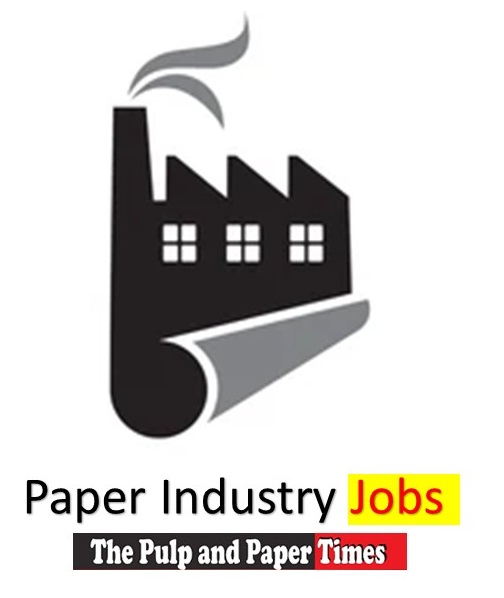 Join Job Channel (View | Submit Jobs)
Join Job Channel (View | Submit Jobs) Join Buy Sell Channel (Free to Submit)
Join Buy Sell Channel (Free to Submit) Paper News Headlines Channel (Free to read)
Paper News Headlines Channel (Free to read)







